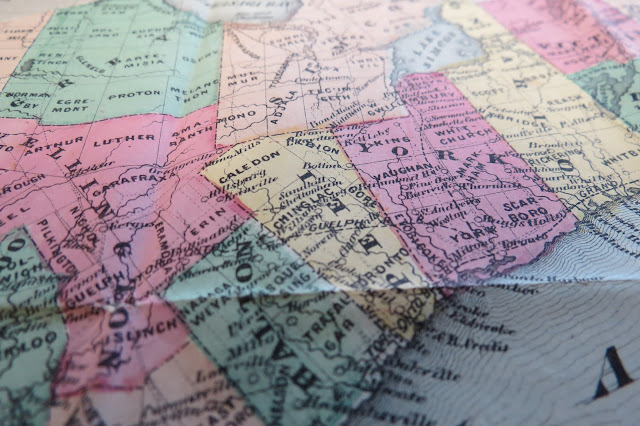The history of the map of Canada starts with Indigenous peoples, but the first known European map of Canada dates to the early 1500s. At the time, cartographers seem to have believed that Eastern Canada and Greenland were part of Asia. Techniques were vastly improved over the next century, and Samuel de Champlain made great strides, mapping as far west as Georgian Bay.
By the time the Diocese of Toronto existed, cartography and publishing were vastly different. Maps were available for common people to own. Here in the archives, we have a great example of a map of Upper and Lower Canada that could have been kept on a bookshelf as a handy reference tool. At first, it looks like any other book:
 |
| ARCAT Holograph Collection HO 02.009 |
But when you look inside, something is a bit different:
 |
| ARCAT Holograph Collection HO 02.009 |
After unfolding several layers, the map is fully opened:
 |
| ARCAT Holograph Collection HO 02.009 |
Though the map is undated, it appears that it was published by Charles Magnus some time after he moved to New York in the 1840s and some time before Canadian confederation in 1867:
 |
| ARCAT Holograph Collection HO 02.009 |
 |
| ARCAT Holograph Collection HO 02.009 |
Google Maps might have a lot of useful features, but it doesn't have this kind of flair!
 |
| ARCAT Holograph Collection HO 02.009 |
A fun decorative detail:
 |
| ARCAT Holograph Collection HO 02.009 |
And here's our own little corner of Upper Canada:
 |
| ARCAT Holograph Collection HO 02.009 |
Think about these kinds of maps when your GPS voice is telling you to turn right on Bloor! For a great history of the mapping of Canada, check out the Canadian Encyclopedia. To see more maps of Canada, check out McGill University's W. H. Pugsley Collection of Early Canadian Maps.
No comments:
Post a Comment